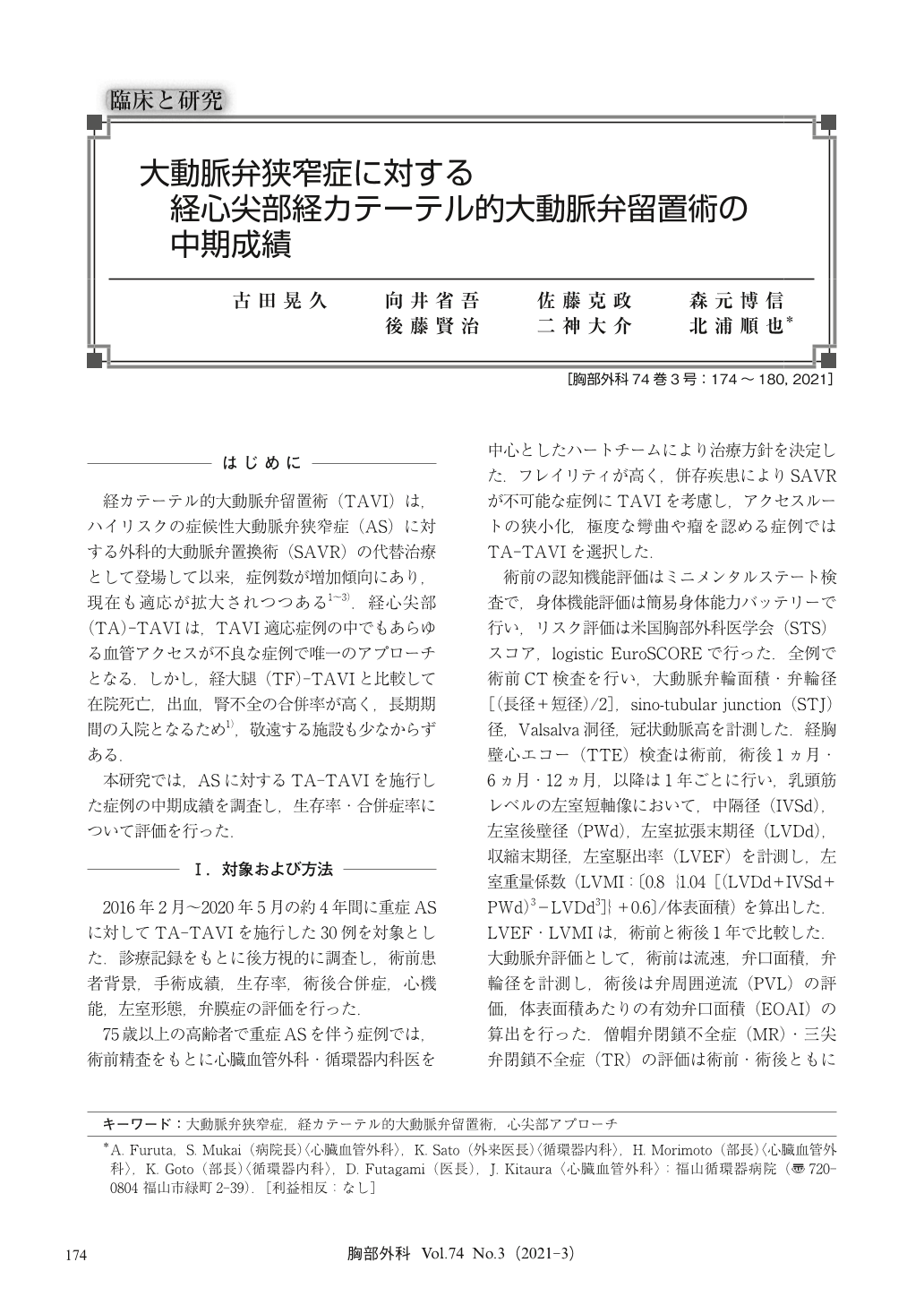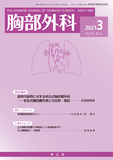Japanese
English
- 有料閲覧
- Abstract 文献概要
- 1ページ目 Look Inside
- 参考文献 Reference
経カテーテル的大動脈弁留置術(TAVI)は,ハイリスクの症候性大動脈弁狭窄症(AS)に対する外科的大動脈弁置換術(SAVR)の代替治療として登場して以来,症例数が増加傾向にあり,現在も適応が拡大されつつある1~3).経心尖部(TA)-TAVIは,TAVI適応症例の中でもあらゆる血管アクセスが不良な症例で唯一のアプローチとなる.しかし,経大腿(TF)-TAVIと比較して在院死亡,出血,腎不全の合併率が高く,長期期間の入院となるため1),敬遠する施設も少なからずある.
We aimed to evaluate the results of transapical transcatheter aortic valve implantation (TAVI) for aortic stenosis. Thirty patients who had aortic stenosis and underwent transapical TAVI between 2016 and 2020 were enrolled. Medical records were reviewed, and the following data were retrieved and analyzed:basic demographic data, and intraoperative data and postoperative outcomes. Mean age was 85.8 years. There were 3 intraoperative complications (1 apex bleeding, 1 coronary stenosis and 1 mitral regurgitation). Extracorporeal membrane oxygenation was initiated due to unstable hemodynamics in two patients. One patient was converted to mitral valve replacement due to severe mitral regurgitation.
There were 2 in-hospital complications (1 with sick sinus syndrome and 1 with cerebral infarction). One patient died of cerebral infarction and eventually, the 30-day mortality was 3%. Median observational period was 1.3 years. Three-year survival was 87.3%. Left ventricular ejection fraction increased by six months after the procedure and then, reached plateau. Left ventricular mass index decreased constantly throughout the observational period. Both parameters at one year after the procedure were significantly higher than preoperative ones.
In conclusion, survival after transapical TAVI was favorable because of the low critical complication rate. Both left ventricular functional improvement and reverse remodeling were obtained.

© Nankodo Co., Ltd., 2021


